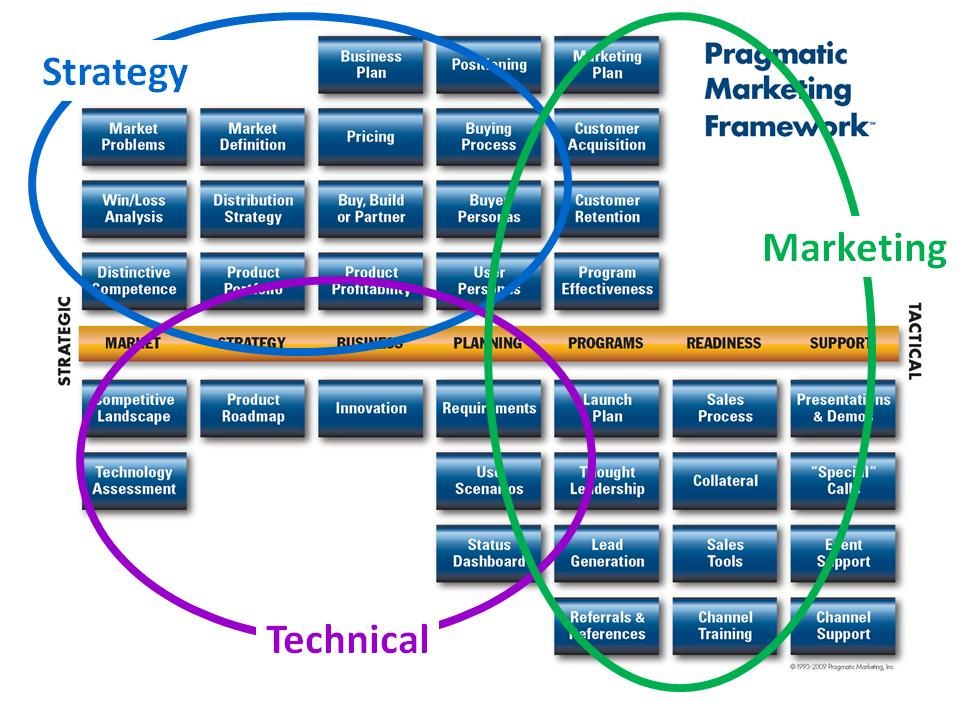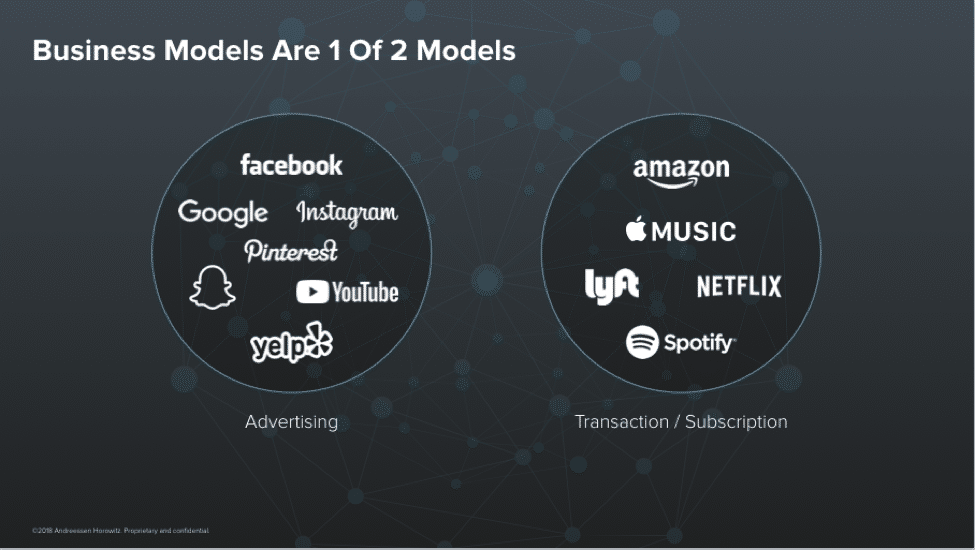Pragmatic marketing is a sophisticated product creation and marketing process that continually adapts itself based on what customers desire. During adaptation, the marketing strategy is tested and re-adapted to ensure that the product is relevant to the customers’ needs and meets the customer’s expectations.Key takeaways
- Pragmatic marketing is a sophisticated product creation and marketing process that continually adapts itself based on what customers desire.
- Some examples of pragmatic marketing are product life cycle, marketing channels, timing of launch, and positioning and messaging.
- The pragmatic marketing framework entails knowing market problems, conducting win-and-loss analysis, evaluating distinct competencies, fleshing out your competitive landscape, and assessing all of your assets.
Pragmatic marketing: Objectives and basic approach
The main objective of pragmatic marketing is to deliver products almost precisely as specified by the customer. This is what makes pragmatic marketing one of the most efficient ways to deliver.
Pragmatic marketing involves a series of product adaptation and tests to ensure that the final product will satisfy the target market.
For example, a smart speaker manufacturer might design a speaker with specific features for a particular audience. They use pragmatic marketing by testing the speaker with a sample of the audience. Based on the feedback they receive from that audience sample, the manufacturer will re-adapt the speaker so that it fits well with user demands when it enters the market.
![]() Pragmatic marketing examples
Pragmatic marketing examples
The first step of pragmatic marketing is finding out what the customer wants. After this, the product is created based on customer desires, and then tested multiple times until the final product emerges. Here are four examples of product testing within the pragmatic framework.
Product life cycle
Pragmatic marketing is never about pitching an already finished product to make the customer think that it is the product they want, without any real input from the customers themselves.
Rather, pragmatic marketing is focused on matching the product to the market’s needs during the product development process, then truly launching a product customers want as a result.
Product developers and marketers who use the pragmatic approach keep testing and revising the product, even after first launch, so they can be sure it meets the user’s needs. They are concerned with creating a customer-centric product, then continuously improving it to sustain its product life cycle.
How to implement this approach?
- First, interview your customers and ask what they want from a product in your niche.
- Then, create a prototype for them that incorporates as many of their requests as possible.
- Once it’s ready, have a beta group of your customers test out the prototype.
- Collect their feedback on the prototype, and apply it to make a stronger second prototype of the product.
- Take the product to them again, hear what they have to say, and improve it further.
- Keep cycling through the testing and development processes until all the feedback you receive is positive
- Once all testers have given positive feedback, it is time to launch the product to the public.
Marketing channels
Many companies launch their products using splash parties, followed by marketing. What makes pragmatic marketing different is that it continues with the product’s life cycle.
Apple is an absolute master of pragmatic marketing, including their use of multiple channels. The Apple marketing armada always creates a buzz about the rumored new iPhone. Weeks before the iPhone is launched, customers always know exactly what to expect from the product.
Timing of launch
The best time to launch your product is when the customer’s curiosity is piqued. In case distractions come, create your diversion to help you get a perfect time to launch your product.
This will make your customers become your salespeople. Perfect times to launch your product are during holidays, major national sports games, national television events, industry trade shows, or during your own brand’s consistently scheduled events that customers expect and love. Apple has effectively created its own “holiday” with its annual keynote events, where the company consistently launches its new products.
Positioning and messaging
Yes, we’re returning to Apple again for this example, because Apple knows exactly how to use positioning strategies in marketing. They used billboards and TV commercials to market their iPods when they first launched, and still use these strategies to market each latest iPhone. Apple also uses graphics to set the products in the mind of the customer.
For example, prior to the iPod launch, they placed posters of people enjoying listening to iPods on countless street walls, so buyers would not be confused about whether they would enjoy the new digital music player.
Pragmatic marketing framework: Why use it?
The pragmatic marketing framework offers many benefits, as it creates a standard language for your entire team and contains the blueprint of activities that are required to bring a profitable, problem-oriented product to the market. Of course, like any marketing strategy, it also carries some disadvantages.
3 key considerations with the pragmatic marketing framework
When using the pragmatic marketing framework, always consider these three crucial principles.
- Knowing which areas to focus on when using this framework is far more critical than knowing the working parts.
- In pragmatic marketing, individual factors multiply rather than add.
- Building products is a high-risk venture, often with a failure rate of more than 85%. This is one of the major disadvantages of pragmatic marketing.
Explaining the pragmatic marketing framework
Learn the market problems in your business and address them adequately.
1. Know market problems
Identify problems in the market by interviewing customers, consulting recent evaluations, and conversing with untapped potential customers. Address the most urgent issues first.
2. Conduct win and loss analysis
Why did recent evaluators choose to buy or not buy the products? What steps did they follow when purchasing? Find out, and apply these findings.
3. Evaluate distinctive competencies
Evaluate and conclude if the organization can deliver value to the market. Follow these steps:
- Conduct 20-30 win interviews to evaluate strengths, loss, and weaknesses.
- Use win on usability for buyer-centric use cases.
- Utilize use-cases that will help you find a precise market segmentation.
4. Flesh out your competitive landscape
Identify alternative offerings and competition from the market. Evaluate your strengths and weaknesses against those of your competitors, then figure out a strategy to overtake your competition.
5. Assess all of your assets
Inventory all your marketing assets and find ways to leverage them. Assets could include blog content, emails, social media posts, brochures, and other marketing mediums you could use to get your message across.
The pragmatic marketing focus
Focus on opportunities that enhance the highest potential in your organization.
1. Define your industry and market
Use target markets to analyze market segments to pursue. Targeted segments must be able to support your business at present and in the future.
2. Develop a distribution strategy
Identify channels that align with your market’s buying preferences. For a detailed description of this strategy, consult Ben Horowitz’s Distribution Model.
3. Compile a product portfolio
Try using strategies and insights like business plans, positioning, market requirements, marketing plans, and the buying process that are focused on the market.
The 15 commandments of pragmatic marketing
- Project management must do its job. Otherwise, other departments will fill its void.
- The outside-in approach enhances the chances of product success.
- Prioritize to build urgent solutions.
- Spend more time on foundational strategies and reduce the time used for tactical approaches.
- Consulting experts when building the product is an absolute must.
- Market problems decide what goes into the product.
- Use your distribution strategies with their personas and their problems.
- Use product management and business plan on every product.
- Use positioning to focus on what you can do for the buyers.
- Your sales channel is not expected to carry a win/loss analysis.
- You must articulate your distinctive competence—what sets your product apart.
- Use market segments that add value to your distinctive competence.
- First position the product, then name it.
- Even if your opinion is interesting, it is irrelevant.
- Most of the answers to your questions won’t be found in your own building.
How pragmatic marketing differs from agile development
Pragmatic marketing is very similar to agile software development.
- With both approaches, you must find out what the customer wants to buy, then test and re-adapt the software (or other product) until the final result evolves.
- Theoretically, both approaches revolve around the idea that presenting an optimum product in the right way will result in rapid sales.
Pragmatic marketing has been used in the tech industry because its concepts are similar to those of agile software development. However, meshing the two methods can create poor results.
Agile methodologies involve rapid changes in product requirements. Thus, it is an ideal method of dealing with inconsistent changes from product managers and executives.
However, agile methods cannot help a business if they fail to decide what must be built or give properties to competing concerns. That is why you can build software using agile marketing, but you won’t sell more software. Agile methodologies deliver products sooner, not necessarily products that people want to buy.
Many authors recommend agile development over methods like waterfall marketing, if you’re working on a long-term, cyclical product development process. After all, agile marketing creates an emphasis on long-range planning in software development. It helps businesses develop products that people want to buy.
However, long-term plans do not capitalize on the feedback that has been capitalized incrementally. Either way, the product must help the business know the kind of product to build and the cost.
Pragmatic marketing targets software and hardware. Useful innovation not only listens to the market but also shows the market what they did not expect to be possible (like the iPhone, for example).
Pragmatic marketing involves agile marketing methods because agile values and principles are useful in contributing to the success of the business. Pragmatic marketing addresses areas where agile methods are failing the company and recommends what must be done.
Wrap-up
Every company that produces new products, introduces new solutions, or consistently rolls out product upgrades uses a product roadmap. These roadmaps outline the vision and strategy of the product and facilitate the making of informed decisions for internal and external stakeholders.
However, traditional product roadmaps are becoming outdated.
Traditional roadmaps fail to show the vision of the problem the company is trying to solve. A good roadmap must bring out the exact problem to be addressed and explain why the prospects, customers, and the market must care.
Taking a more granular view, as in pragmatic marketing, ensures all aspects of the product development cycle are covered. It requires you to have all the info you need from customers on a high level so you can deliver the best solution to the market.





